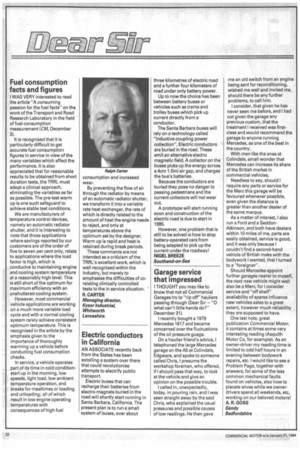Fuel consumption facts and figures
Page 26

If you've noticed an error in this article please click here to report it so we can fix it.
I WAS VERY interested to read the article "A consuming passion for the fuel facts" on the work of the Transport and Road Research Laboratory in the field of fuel consumption measurement (CM, December 3).
It is recognised that it is particularly difficult to get accurate fuel consumption figures in service in view of the many variables which affect the performance. It is also appreciated that for reasonable results to be obtained from short duration tests, the THRL must adopt a clinical approach, eliminating the variables as far as possible. The pre-test warm up is one such safeguard to achieve stable test conditions.
We are manufacturers of temperature control devices, namely an automatic radiator shutter, and it is interesting to note that those applications where savings reported by our customers are of the order of five to seven per cent only, relate to applications where the load factor is high, which is conducive to maintaining engine and cooling system temperature at a reasonably high level. This is still short of the optimum for maximum efficiency with an unshuttered cooling system.
However, most commercial vehicle applications are working on a much more variable load cycle and with a normal cooling system rarely achieve consistent optimum temperature. This is recognised in the article by the emphasis given to the importance of thoroughly warming up a vehicle before conducting fuel consumption checks.
In service, a vehicle operates part of its time in cold conditionstart up in the morning, low speeds, light load, low ambient temperature operation, and breaks for mealtimes or loading and unloading; all of which result in low engine operating temperatures with consequences of high fuel consumption and increased wear.
By preventing the flow of air through the radiator by means of an automatic radiator shutter, we transform it into a variable rate heat exchanger, the rate of which is directly related to the amount of heat the engine needs to reject, and only at temperatures above the optimum set by the designer. Warm up is rapid and heat is retained during break periods.
These comments are not intended as a criticism of the TRRL's excellent work, which is well recognised within the industry, but merely to emphasise the difficulties of corelating clinically controlled tests to the in service situation. ' R. CARTER Managing director, Kysor Industrial, Whitworth Lancashire.
















































































